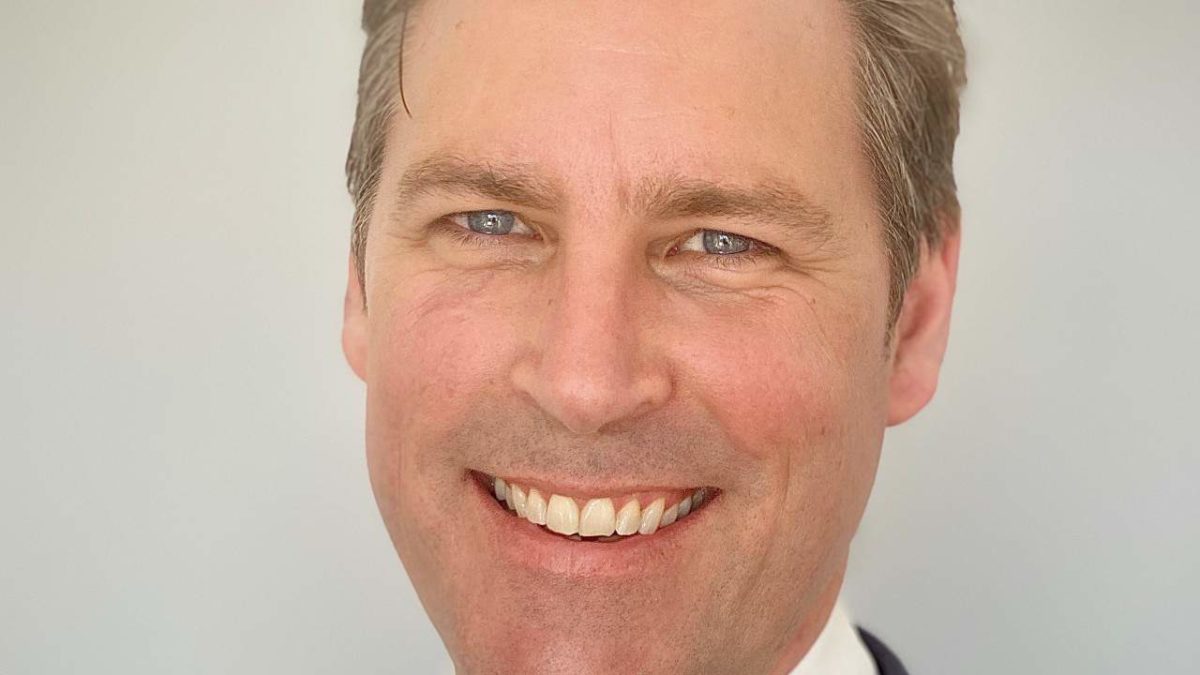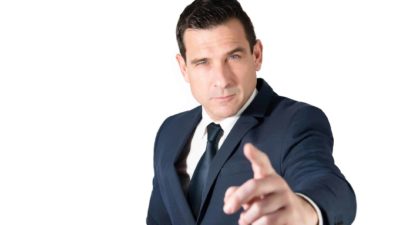Ask A Fund Manager
The Motley Fool chats with fund managers so that you can get an insight into how the professionals think. In this edition, Balmoral Asset Management director Angus Crennan tells how he liquidated 90% of the fund when he knew COVID-19 was about to wreck share markets.
Investment style
The Motley Fool: What's your fund's philosophy?
Angus Crennan: It's a multi-asset strategy. And it's got a twin objective. The first objective is to get 8 percent [per annum] over rolling 3-year periods. The second objective is to deliver positive returns regardless of market conditions.
Broadly speaking [there are] two main differentiators that Balmoral represents. The first one is relationships and trust. All of the founding investors were personal friends of mine from when I was a captain in the Australian Army.
I left the army in 2003 and moved to Macquarie Group Ltd (ASX: MQG). And I won't go through the story, but a lot of the officers that remained in the Australian Army came to me and requested that we put together an investment program that fitted their requirements. Out of that, the Balmoral fund was born. And that's subsequently taken on more investors.
I'll give you an example. I've got a very educated client called John. He's not a military person. He was introduced to me by a personal recommendation. He and his wife invested in the fund and they got great outcomes.
John really appreciated the transparency. And as a result, his children invested in the fund. And then when his wife passed away, John actually moved some of his other investments into Balmoral because of that relationship and that trust.
The other thing I'd also say is that I come from an insurance investment management background. I managed the balance sheet portfolios for Zurich Insurance Group AG (SWX: ZURN), which is a Swiss insurance company. In that sort of an environment, the money that you're managing, or the portfolios that you're managing, is actually the funds that are going to be required for the company to pay future insurance claims. So the perspective on preservation of capital and the sophistication and the knowledge that these companies have built over a long period of time is something that I've brought to the business.
MF: How has it performed in the past year?
AC: The past year was unique in that systemic risk was extraordinarily elevated. So what we did back in January and February of 2020, when the pandemic first started really popping up in Italy and started popping up in other countries, I rang all of my clients personally and explained to them the situation and they said we don't need to be here. So we effectively liquidated the portfolio.
We had three names that we held onto and we had 90% in cash.
MF: Wow.
AC: From there the market collapsed. We did extraordinarily well in that first 3 months of the year because the majority of the cash, maybe 85–90% of our cash was held in US dollars. The US dollar strengthened a lot. We ended up having a positive return in that first quarter, whereas everyone else was down 33%.
It was an extraordinary period of time. However, what I explained to all my clients was that we weren't going to invest until we had some sort of quality data that allowed us to make good decisions.
So when we had fiscal stimulus and extraordinary monetary policy, we had this V-shaped asset price recovery. We weren't positioned for that. But I didn't lose a single client because I'd explained to them at the start what the plan was. When the data started coming through, then we started going back into the market. By the end of the year, we were 70% invested. And then by January of 2021, we were fully invested again.
We were just interested in capital preservation.
I have, at times, a conflicting investment mandate. Eight percent, rolling three [years]. In 2019, we did 17% – everyone was very happy with that.
And then 2020, we did 1%.
That was a function of very, very heavy currency headwinds because ultimately the Australian dollar strengthened over 2020. And also that extraordinary conservatism for multiple quarters in a row, given that we needed to see the data coming through. We knew that fiscal stimulus was being pumped into the market. We knew that interest rates were very, very low. What we didn't know was how companies and households were going to behave. And that's what we needed to see coming through the data.
But again, we explained that to everyone one-on-one and everyone was comfortable with that. The clients from the start have been all about, "Give me a good return and don't lose me money".
Buying and selling
MF: What do you look at closely when considering buying a stock?
AC: Well, we start out with a lot of data. I try to use 15 years of financial statements, wherever that's possible. What we're looking at is we're looking for consistency over the full 15 years. We've got a scoring process that looks at how the business has done in one year, how the business has done in three years, how the business has done all the way out to 15 years. And we look at a range of metrics — we look at sales, we look at earnings, we look at cash generation.
What we're looking for is a business model that really works. And that's our starting point. What we do there is we've narrowed down to a bunch of businesses that we think have got a lot of potential.
Then we look at them more closely. Particularly, we pay attention to the two global recessions that we've had over that period of time — the GFC and 2020. The businesses that stack up and held up really well in those environments, what we've got is a series of cash generation characteristics as close to bonds as we can get.
The valuation of these businesses is a lot easier because you've got a lot more certainty in their cash generation. We strongly believe that the value of a financial asset is nothing more than its future cash flows discounted back to the present.
When we can get really good certainty on those cash flows, this is going to not only tick the box in terms of our return generation in the future — because these are growing businesses that do really well — but we're also going to be able to tick the box around earning certainty and the sustainability of that valuation.
So those are the sorts of businesses that are really well fitted with our mandate.
MF: To give our readers an idea, what are your two biggest holdings?
AC: The first one is Vidrala SA (BME: VID). Vidrala is a Spanish glassware business.
And the second one is Cranswick PLC (LON: CWK). Cranswick PLC is a UK-based business that is involved with food stuffs.
These two businesses are really representative of the sorts of profiles that we're attracted to.
MF: Cash generative and a proven track record?
AC: Exactly, exactly… We try and manage complexity by looking for those businesses that have consistently done well using data that allows us to look at two global recessions. Not all of the stocks we are attracted to have 15 years of data. Our preference is that they have 15 years of data, because it allows us to see how they perform through various cycles.
MF: What triggers you to sell a share?
AC: The trigger for selling out of a share is generally based on valuation. That, of course, incorporates if the company's performance deteriorates.
What's different about us is that we'll also sell based on strategic asset allocation. That strategic asset allocation, for example, in early 2020 resulted in us liquidating some fantastic businesses, really great investments, and effectively locking in those gains as a result of our focus on capital preservation.
What's coming up?
MF: Where do you think the world is heading at the moment?
AC: We're pretty positive. We think that [Joe] Biden has made a very strong, differentiated stance on being a man of authenticity and that he has very clearly stated that there's a large stimulus program coming. So if the American people spent the stimulus under the most harrowing circumstances imaginable, then this next stimulus will equally be spent, which will likely result in a lot of economic multipliers. And as that economic activity picks up, businesses participate in that economic activity surging. So we're positive on that.
We're also positive on the tailwind for financial assets, given interest rates are so low. If you have interest rates at zero, any future cash flow can theoretically be valued at infinity. So when you bring discount rates very close to zero, which is what the central banks all around the world have done, what you do is you bring forward recognition of all of those future cash flows. And that's why the valuations stack up.
In a relative value sense to bonds, equities are reasonably attractive and they remain reasonably attractive. This recent sell off on inflation fears has improved that, relative to value.
So, on the basis of discount rates and relative value, and on the basis of very large stimulus programs that are going to be very beneficial for sales revenue and earnings, we think that 2021 might end up being a very, very positive year.
MF: Has your team bought in to any new positions during the sell-off the last couple of weeks?
AC: We have a very, very small position in a leading global edge computing business. We haven't finished buying, so I don't want to name it.
The fact that I've already indicated that it's edge computing, most people will know what I'm talking about. If the sell off continues, this is a business that all of its cash promises are well into the future.
And that means that its valuation is really dependent on where interest rates are. We have a very small position. We've clearly introduced a tiny bit more exposure, but we're watching that space closely because if the US Federal Reserve decides that it's not ready for the bond market to start setting prices on rates, and the bond market needs to remain a political utility, which is likely, then those very long cashflow-based valuations, like fast growing technology businesses, could have another leg.
So we're exploring how to capture that optionality in a way that is going to align with a very, very strong risk management foundation of our portfolio.
MF: Are you most of the time fully invested or do you have some cash in hand?
AC: 98% invested at the moment. We like to keep a little bit of cash to be opportunistic and, given where bonds are trading, our view is that the return potential of bonds has been significantly diminished and equally, their value as a diversifier, has been compressed.
If we had a period of risk aversion, which is possible, then we would need a very, very large sleeve of bonds to balance our equity exposure. That's going to turn our portfolio's return expectations towards where the bond market is trading. And that is not in line with our twin objectives.
Instead of using bonds to balance our equity exposure, we have been relying on our derivative overlay. So maintaining a bit of cash is very important because, if we're purchasing protective instruments to manage the portfolio as risk, rather than being in a position of having to sell investments, it's very important for us to maintain a small cash cushion that allows us to move quickly on that front.
Obviously, as the situation changes, and if strategic asset allocation decisions are required, then those decisions get made and the portfolio moves accordingly.
Overrated and underrated shares
MF: What's your most underrated stock at the moment?
AC: I'm going to say Vidrala. It's a great business. It's in an industry that is mature globally and has been for a very long time. Yet it consistently generates strong returns. And that answers a lot of questions around management quality, barriers to entry, all of those sorts of strategic questions that we look at in calibrating quality. And it's going to be generating a really attractive earnings yield and free cash flow yield for a company of that quality.
MF: What do you think is the most overrated stock at the moment?
AC: What I'd say is that there are pockets of the market that are overvalued. And usually that's the case. The risk with those pockets are that, coming back to the foundations of valuation — being cash flows, interest rates, discount rates — if expectations aren't met, the downside risk of those sorts of investments is very large.
That means that you're taking on an extraordinary amount of risk and also if the valuation is very high, then the return expectation, accordingly, is low. So the asymmetry of, what am I getting for 'what am I paying?' is not there.
But we don't look into that space because our process guides us into a narrower and narrower area of opportunity. Then we put a lot more work and effort into distilling that smaller universe of great businesses. So if it's extraordinarily expensive, it quickly falls out of our process.
Looking back
MF: Which stock are you most proud of from a past purchase?
AC: Sartorius Stedim Biotech SA (EPA: DIM). It's a medical, pharmaceutical and laboratory consumables supplier. We invested in this stock in 2017 and we paid 54 euros a share. This business in February was trading at over 400 euros a share.
During that time we've progressively realised gains, and so our remaining ownership stake is very small. So if we were to name a stock we're most proud of in terms of purely its contribution of performance, that would be the name.
MF: What happened in that period?
AC: The delivery of the business has been exceptional. The track record of the business was short because it was spun out of a major parent. But all of those early years of performance were so staggeringly good that we took a small sleeve and then, as the price progressively higher and higher, we allowed investors to buy that stock from us.
MF: Is there a move that you regret from the past? For example, a missed opportunity or buying a stock at the wrong timing or price.
AC: The concentration in US dollars over 2020 ended up being an unnecessary currency risk.
We originally were benefiting from that. And then as the US Fed and the Treasury moved more and more aggressively, and the supply of US dollars changed significantly, the Australian dollar appreciated against the US dollar. So it lost some of its appeal as a safe haven asset.
Interest rate differentials weren't that significant and historically interest rate differentials would have had a more substantial correlation than what they did in 2020 and early 2021. It was supply and demand. And what we've decided going forward is that we don't need to have that degree of currency concentration.
It was a risk we didn't need to take.
MF: Some experts are predicting the Australian dollar will hit 85 US cents in the coming year. Your thoughts?
AC: Australia's managed the pandemic really well. And there's so much growth expected in a lot of big economies overseas that you'd expect that our commodity and our service exports to do well.
I'd also say Australia is a fantastic investment destination. Our legal system, our culture, the control over our borders, the lack of geopolitical risk, all of these features strongly support Australia.
So, could Australian dollar appreciate further? I think it's possible. I think that the actions of the reserve bank have been important in moderating some of that appeal. In the GFC, we went to US$1.10 or US$1.11.
There are some counter-arguments, including that the Australian economy is a very simple economy. That if the United States economy was growing very strongly after the vaccine rollout and given the energy transformation, the environmental spend and the household level stimulus that the government is now considering, would you want your capital in Australian dollars in Australian investments? Or would you want them in the fast-growing US economy with the much more diverse growth engines in that larger economy? There's that argument as well.
So currencies are very hard to predict.









